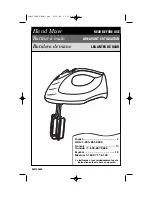
POWER CORE User Manual
Version: V6.0.0/5
459/459
23. Glossary
Phantom Power
This is the power supply required when working with condenser microphones. The
console supplies 48V to the microphone via the audio connector.
Programme
The main output of a live broadcast console. This is the mix which feeds the
transmission chain.
RAS
Radio Automation System control protocol is Lawo’s universal protocol for
communication between a mixing console (MIXER) and a radio automation system
(RAS).
Ratio
In the context of a compressor or expander, the ratio defines how much compression
or expansion is applied. For example, the high the compressor ratio, the more signal
levels above the compressor threshold will be compressed.
Release Time
In the context of dynamics processing (compressor, limiter, gate or expander), the
release time defines the time taken for the action of the processor to subside. For
example, when using a gate, a short release time will cause the gate to close quickly
after signal falls below the gate threshold.
Remote MNOPL
The remote control protocol RemoteMNOPL is a LAN based client-server network byte
order protocol to enable third party systems to control Lawo’s digital mixing consoles
or standalone routers.
Roll-off Frequency
See Shelving EQ.
Routing
Signal Routing
Term used to describe the connection made between an input and output.
RS422
A type of serial interface used for communication with external devices such as radio
automation systems.
Rumble Filter
Name given to the High Pass Filter which can be inserted in the analogue microphone
preamplifier. Used to cut out or reduce unwanted low frequencies, such as rumble,
before analogue-to-digital conversion.
Sample Rate
The speed at which the internal processing of the system takes samples respective to
values from a continuous, analogue audio signal to make a discrete, digital one. For
example, when running at 48kHz, incoming analogue audio is sampled at a rate of
48000 values per second.
Shelving EQ
A shelving equaliser band is used to increase or decrease high or low frequency
components of a signal. The slope of the shelf defines how steeply the gain
increase/decrease is applied. The roll-off frequency defines the frequency at which
signal level is reduced by 3dB.
Slope
See Shelving EQ.
Source
In Lawo's radio on-air consoles, this term describes a channel with input signal
assignment, DSP and other attributes (MF Keys, control triggers, etc.) A source
becomes active once it is assigned to a fader channel.
Different to “Input” - the term for an audio input signal (i.e. the physical interface).
Sum
Summing Bus
The result of several audio signals mixed together within the console.
Telephone Hybrid
Device which deals with bi-directional signals to/from a 2-wire phone line. One line
provides an incoming feed from the phone line (e.g. the guests voice), and the other
sends signal back to the receiver (e.g. the mix minus feed).
Threshold
In the context of dynamics processing (compressor, limiter, gate or expander), the
threshold defines the signal level at which the processor starts to act. For example,
the gate threshold sets the level at which the gate will open and then close.































